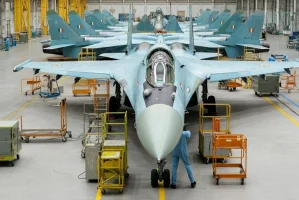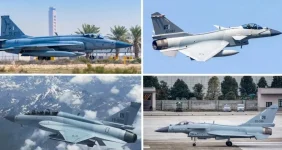- Views: 1K
- Replies: 7
Former US Navy fighter pilot C.W. Lemoine, with experience flying F-16s and F-18s, recently offered his analysis of a leaked video purportedly showcasing China's sixth-generation fighter jet. While some have hailed the aircraft as a revolutionary leap in air combat, Lemoine's assessment suggests a different role for this mysterious machine.
Lemoine was immediately struck by the aircraft's size, leading him to believe it might be closer to a fighter-bomber (JH) than a traditional fighter. The absence of a tail, a design choice aimed at reducing radar signature, further emphasized the focus on stealth capabilities. "There's no tail; it's just these fins," Lemoine observed, highlighting the priority placed on minimizing radar reflections.
The aircraft's design incorporates a large weapons bay, indicating a significant payload capacity. Coupled with "beefy" landing gear, this suggests the ability to carry heavy loads or operate from austere airfields. Lemoine speculated that the aircraft's role might be more aligned with a strike bomber, capable of high-speed, high-altitude operations and engaging in Beyond Visual Range (BVR) combat, but ultimately designed to deliver bombs undetected deep into enemy territory.
One of the most intriguing aspects of the design is the engine configuration. Lemoine observed what appeared to be three engine intakes and two distinct exhaust nozzles, possibly hinting at a third engine. This unusual configuration, with an intake on top of the fuselage, led him to speculate about potential hypersonic capabilities or the use of advanced propulsion systems like ramjets or scramjets.
However, Lemoine expressed doubts about the aircraft's maneuverability in close-range dogfights. "It's not a dogfighter," he stated, emphasizing that while it may excel in BVR engagements with its potential to carry numerous missiles, its design does not suggest agility for within-visual-range combat, unlike aircraft like the Su-57, F-22, or F-35.
Lemoine's analysis also touched on the broader strategic implications. He acknowledged the aircraft's potential to redefine air superiority roles, shifting towards "strike fighters" that prioritize long-range engagements and precision strikes. He even speculated about the possibility of the aircraft deploying AI-controlled "loyal wingman" drones to handle close-range combat.
Adding a touch of humor, Lemoine suggested the nickname "The J-69 Moth Man" due to its distinctive appearance. He concluded that while the aircraft shows promise as a stealthy, high-capacity strike platform, its exact capabilities and strategic role remain to be seen until more details emerge or it demonstrates its performance in flight.


